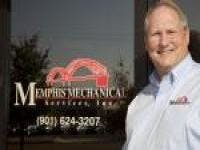Demand for commercial refrigeration equipment in the U.S. is forecast to increase 4.6% per year to $9.4 billion in 2016, says The Freedonia Group, Inc., a Cleveland, OH-based industry market research firm.
The Freedonia Group’s latest report related to commercial refrigeration says growth will result from improvements in capital investment and nonresidential construction expenditures. In addition, a positive outlook for the broader U.S. economy will encourage end users such as fleet operators and retailers to expand existing operations and replace aging equipment.
Gains in all markets will benefit from users’ desire to increase efficiency, due to the narrow profit margins throughout the food industry. Aftermarket sales of commercial refrigeration equipment, which consist of both repairs and products purchased to replace existing equipment, accounted for 73% of demand in 2011 and will continue to comprise the majority of demand.
For information on Freedonia Group research reports, visit thefreedoniagroup.com.
Contractor Commentaries:
1. Business as Usual, If Only as a Precaution
Bryan Beitler, vice president/chief engineer, for national service/installation provider Source Refrigeration & HVAC, Anaheim, CA sees 2013 as being fairly flat or slightly up from 2012 for supermarket contracting.
“Many customers have to keep planning, upgrading, and competing, so it’s ‘business as usual’ at this point for many.”
Beitler enumerates just a few of the challenges stores face, none of which are minor:
“Grabbing market share, eliminating underperforming sites, competing for new sites in growth areas, and solving inner city ‘food desert’ issues are still real initiatives that most likely will continue,” he says.
Beitler believes supermarket remodeling will be the dominant source of work in commercial refrigeration.
“New stores will most likely remain at lower levels. Customers will look to stretch the life of or adapt their existing refrigeration equipment to newer technologies. Use of newer technologies from a remodel perspective will be one of the newer challenges that we’ll face. How to cost-effectively integrate natural refrigerants into a remodel program is the issue.”
Beitler says service and refrigerant coversions have room to grow, as equipment wears out and refrigerants are phased out.
“With the predicted price increases for R-22 that loom on the horizon, as well as production caps that will ratchet downward, refrigerant conversion work will increase steadily. There seems to be a trend that our customers are hanging onto their refrigeration equipment longer, stretching their capital dollars as far as they can, meaning that an emphasis on preventive maintenance would become a more pressing concern,” Beitler offers. “Gearing up for additional service activities is warranted.”
Beitler believes energy efficiency will be a driver on many fronts, and will require contractors to be up-front sources of energy savings advice, expertise, and system monitoring.
2. They Keep Going, and Going, and Going. . .
Richard Luhm, president, Memphis Mechanical Services, Memphis, TN sees service prospects improving in 2013, as customers wring as much life as they can out of systems.
“During these economic times people seem to want to repair things way past their useful life, because they don’t have the funding to replace it. Also, it’s my understanding that lots of depreciation advantages will be going away as of January 1st. This is another reason replacement equipment sales will fall,” he says. New store construction will be based on ability to fund, and will serve as a competitive advantage.
“It seems that the only ones that will be doing anything construction-wise in the coming year are the very successful firms that have capital to spend, and will try to use this time when others can’t to increase market share,” Luhm says. “There are three large remodels coming up in our area this year that fall into this class.
“High efficiency in new equipment will be a driver, for sure. It will only be a factor in existing equipment if you can put together a project that will prove a payback of two to four years, and last for 10 years, so savings can be added up over time.”
3. Eliminate Compressor Failures, ‘Tune Up’ More Systems
Steve Wright, Sr., president, Wright Bros., Inc., Griffin, GA, is taking action to solve a recurring service issue.
“From a supermarket refrigeration standpoint, we’re going to be aggressive about finding out where our failures are. You can have a service issue that snowballs into a major problem that costs customers money,” he shares. Specifically, Wright is on a crusade to eliminate recurring compressor failures.
“We’ve started an in-house program called Cause of Failure Analysis (COFA), in which we analyze primarily compressors that have failed. I’m putting an employee on this part-time, whose sole responsibility is to determine what caused the failure of a compressor part, and what we can do to minimize failures.
“From the sales side, we’re going to focus on bringing some nuances to our chain store work, by providing whole-store commissioning and reporting,” Wright says. “We’ll suggest improvements and provide savings estimates. Many stores’ systems are ‘out of tune.’ We’ve already identified a store to ‘tune up,’ and I hope to have it completed by March. We should see the results during the summer energy billing cycle. We’ll evaluate the store, develop a savings strategy, implement it as approved, and then review the results with our customer.”
4. Service Up, New Construction Down, New Talent On Board
Brian Hughes, executive vice president, Hughes Environmental Engineering, Montvale, NJ (the Contracting Business.com2010 Commercial Refrigeration Contractor of the Year), provided some insight into the company’s specialty refrigeration business (food manufacturing/cold storage, etc.). He sees “mixed”prospects for 2013.
Hughes is upbeat about the company’s staffing outlook. “We had a really good year in terms of personnel, particularly in the office. As difficult as things are right now, it’s a great time to be hiring good people in this industry,” he says. “We put an addition onto our offices, and are hiring additional operations and sales people. I’m not sure when the market will turn around, but we want to be ready when it does.”
Read the Hughes story online here.
A LOOK FORWARD WITH BILL KATZ
Bill Katz, a technical writer and course developer with Hill PHOENIX, is known around the commercial refrigeration industry as a leader in the development of alternative refrigeration systems. We asked him to provide some commentary on prospects for new innovations in 2013.
Q: Will CO2 systems proliferate in 2013?
A: Since the advent of the first two modern carbon dioxide (CO2) systems in 2006, the number of subsequent CO2 installations has grown to more than 80 systems today. Prior to those first two systems, secondary glycol systems had been in use for a number of years and continue to be installed on a widespread basis. Given this growth in alternative systems over the past several years, the coming year is likely to only see more and more of these types of systems installed, with increased emphasis on environmentally friendly CO2 systems and more energy-efficient variable speed drive equipped glycol systems.
Q: In supermarkets, how are prospects for reduced leak rates, new systems, and overall energy efficiency measures?
A: As regulatory measures mount and the continuing pressure to contain costs force more efficient operations, supermarkets are paying greater attention to paring leak rates down from the industry average 25% per year, thereby reducing the expense of replacement, repair, and energy. Alternative systems using secondary glycol and CO2 — that remove HFCs from the store and contain what comparatively little charge they do use entirely to the machine room — are being installed more frequently by more customers. As mentioned above, glycol systems equipped with variable speed pump drives are becoming increasingly common. We just concluded a study that compared the operation of constant speed equipped pump systems to that of variable speed pump systems, showing significant results. Variable speed drives are also being used more and more on compressors and condenser fan motors, for even more energy savings. And, even relatively simple measures, such as preventative maintenance and recommissioning, that have direct benefits in more energy efficient operation, are getting more emphasis.
Q: What observations can you offer that will be of interest to enterprising contractors?
A: As more and more new technologies come on line, we’ve found that training and education have made some of the biggest differences for contractors. More customers — large ones in particular —are increasingly requiring contractors to have received training from manufacturers before installing new types of systems, and in some cases, even before bidding to install those systems. Even though the majority of systems currently in use continue to be traditional DX systems, the industry is changing, and the more one knows about the new types of technologies stores are embracing, the more contractors will be able flourish and compete.















